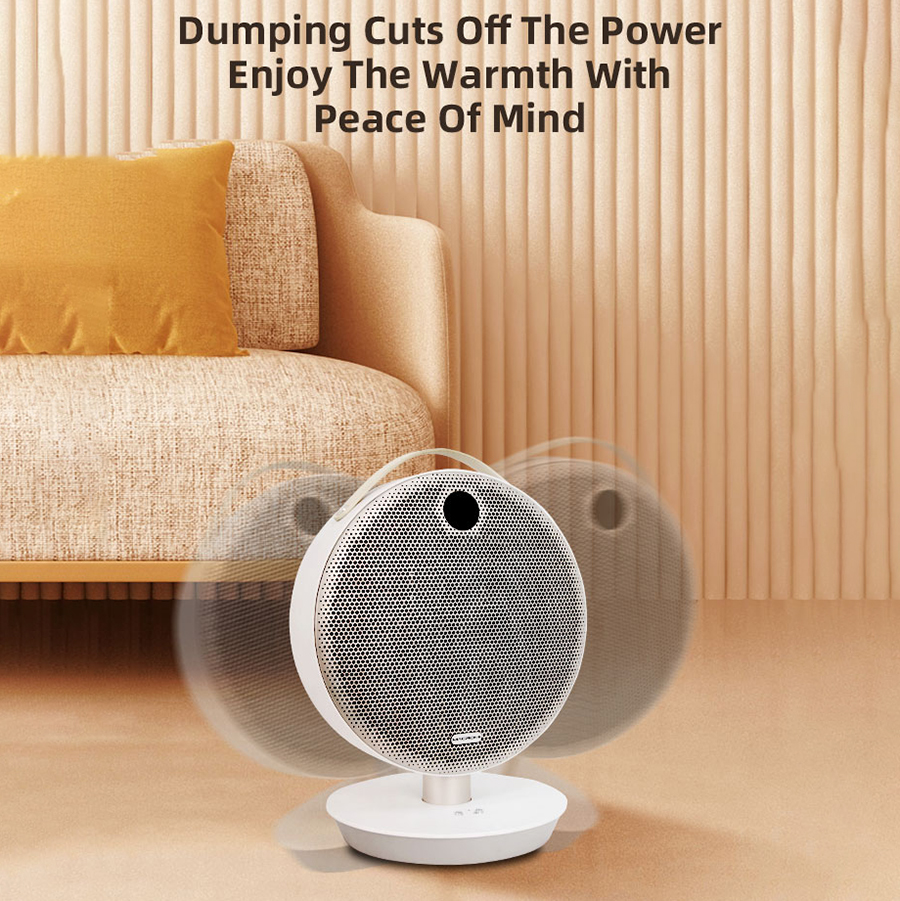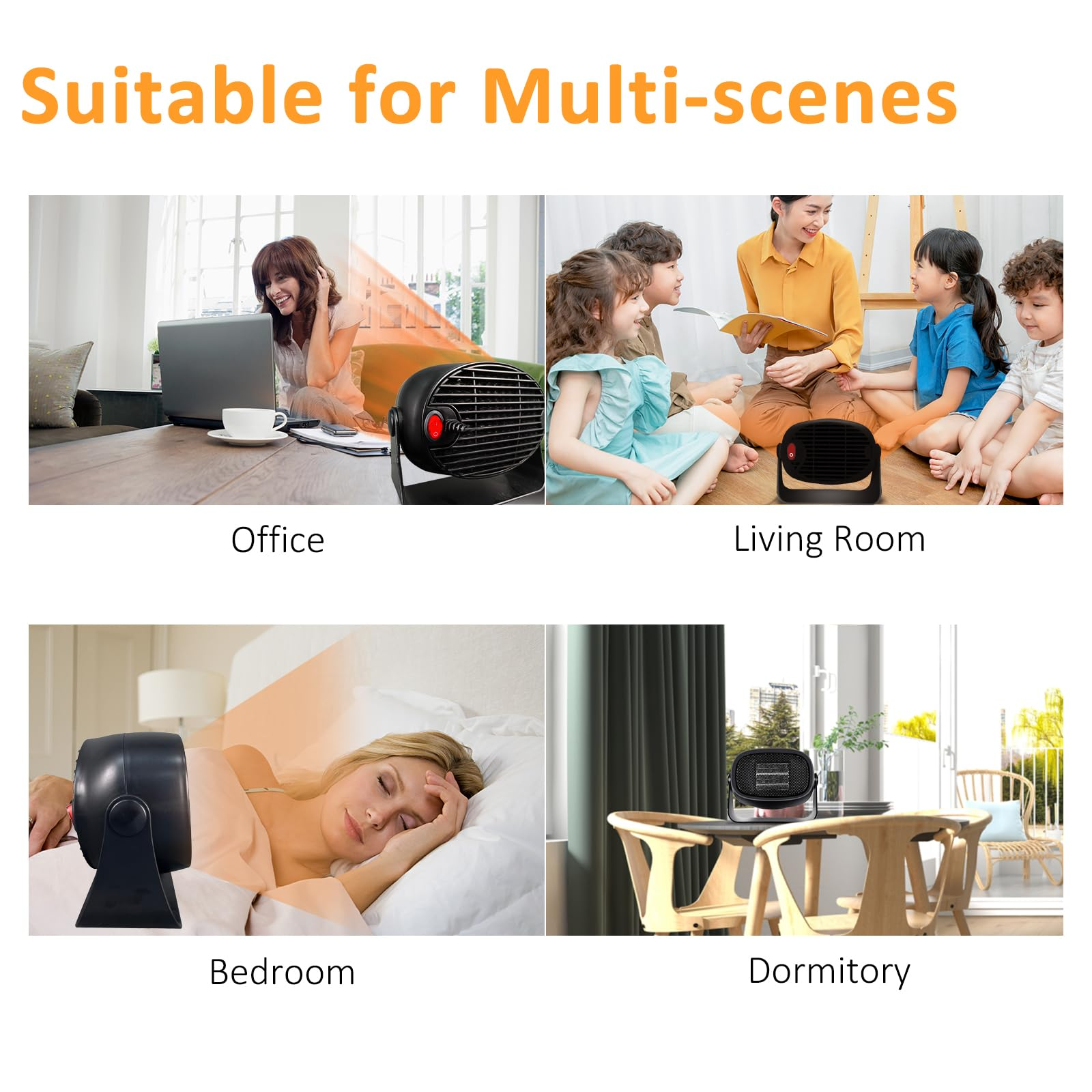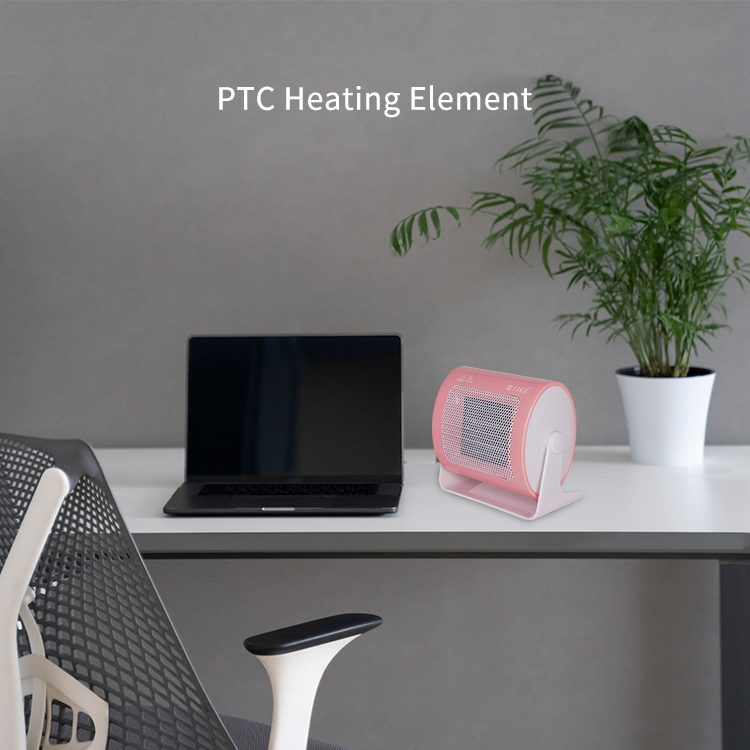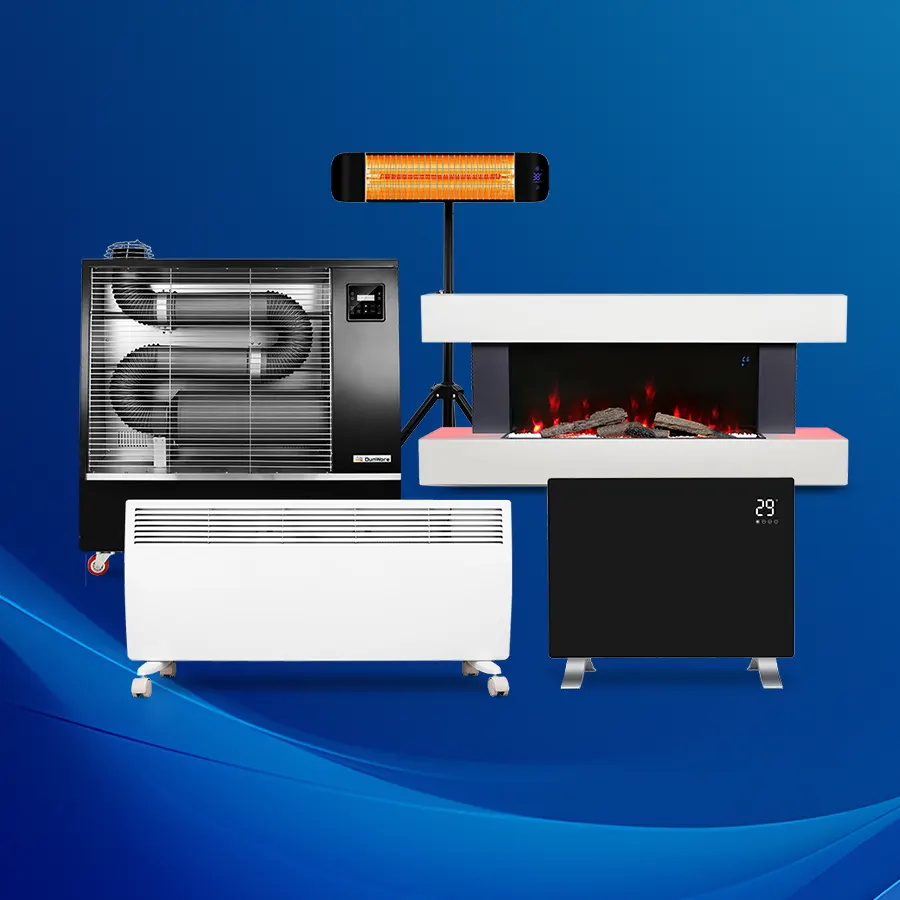Trasformare il tuo patio in un ambiente caldo, uno spazio invitante durante i mesi più freddi può migliorare significativamente la tua esperienza di vita all'aperto. Una soluzione efficace sta utilizzando a termoventilatore.
Questo articolo approfondisce i modi ottimali per utilizzare un termoventilatore nel tuo patio, precauzioni di sicurezza da considerare, e le distinzioni tra i vari tipi di riscaldatori. Inoltre, esploreremo i vantaggi di modelli specifici come la combinazione di termoventilatori cbath e discuteremo i vantaggi dei riscaldatori esterni ad alta efficienza energetica.
Quando il tempo diventa freddo, il patio diventa spesso uno spazio dimenticato: troppo freddo per goderselo ma troppo affascinante per essere ignorato. Per fortuna, con la giusta soluzione di riscaldamento, il tuo patio può diventare un accogliente rifugio all'aperto tutto l'anno. Un termoventilatore è una delle opzioni più efficaci a questo scopo, soprattutto quando si sceglie una compatta, sicuro, ed modello ad alta efficienza energetica progettato per uso esterno.
In questa guida completa, ti guideremo attraverso tutto ciò che devi sapere sull'utilizzo di un termoventilatore nel tuo patio, comprese le migliori pratiche, importanti consigli sulla sicurezza, e come selezionare il tipo di termoventilatore più adatto al tuo spazio. Lungo la strada, risponderemo a domande chiave come:
- Qual è il modo migliore per utilizzare un termoventilatore?
- Quali precauzioni dovrebbero essere prese quando si utilizza un termoventilatore?
- Qual è la differenza tra un riscaldatore e un termoventilatore?
Cos'è un termoventilatore?

UN termoventilatore, noto anche come riscaldatore ad aria forzata, è un dispositivo che riscalda uno spazio facendo passare l'aria su un elemento riscaldato utilizzando un ventilatore incorporato. La ventola aiuta a distribuire rapidamente l'aria calda in tutta l'area, rendendolo più efficiente per il riscaldamento localizzato o per il riscaldamento di ambienti esterni di piccole e medie dimensioni come i cortili, mazzi, e balconi.
Come funziona
- Elemento riscaldante
Generalmente, è una bobina di ceramica o metallo che si riscalda quando passa l'elettricità.
- Ventilatore interno
Aspira aria fresca e la soffia attraverso l'elemento riscaldante, riscaldando l'aria.
Consente agli utenti di impostare e mantenere la temperatura desiderata.
- Caratteristiche di sicurezza
La maggior parte dei modelli include protezione dal surriscaldamento e interruttori antiribaltamento per una maggiore sicurezza.
Rispetto ai riscaldatori radianti che riscaldano oggetti e superfici, i termoventilatori si concentrano sul riscaldamento dell'aria, che li rende perfetti per un uso a breve termine o per un riscaldamento rapido.
Vantaggi dell'utilizzo dei termoventilatori per i cortili

I termoventilatori offrono numerosi vantaggi se utilizzati in spazi esterni come i cortili, soprattutto se selezionati e utilizzati correttamente.
Distribuzione rapida del calore
I termoventilatori riscaldano gli ambienti molto più velocemente dei tradizionali riscaldatori d'ambiente. Ciò è particolarmente utile durante gli ondate di freddo inaspettate quando vuoi rendere il tuo patio confortevole in pochi minuti.
Portabilità e comodità
UN piccola stufa elettrica esterna è tipicamente leggero, compatto, e facile da spostare. Puoi usarlo nel patio la sera, poi portalo in casa durante la notte.
Efficienza energetica
Molti modelli moderni, come la combinazione del termoventilatore cbath, sono progettati per prestazioni elevate con un basso consumo energetico. Questi riscaldatori da esterno ad alta efficienza energetica sono spesso dotati di termostati regolabili e timer programmabili per evitare sprechi energetici.
Conveniente
I termoventilatori sono generalmente più convenienti del propano o del propano stufe a gas per esterni, e la mancanza di costi per il carburante li rende convenienti nel lungo termine.
Il modo migliore per utilizzare un termoventilatore nel tuo patio

Per ottenere il massimo valore e comfort dal tuo termoventilatore, è importante usarlo correttamente. Di seguito sono riportati alcuni consigli pratici per aiutarti a massimizzare la resa termica, garantire la sicurezza, e mantenere le prestazioni a lungo termine.
Scegli il riscaldatore giusto per uso esterno
Non tutti i termoventilatori sono progettati per gestire le condizioni di un ambiente esterno. Quando si seleziona un'unità, considerare quanto segue:
- Design resistente agli agenti atmosferici
Se lo usi in un'area semiaperta o umida, scegli un modello adatto all'esterno o resistente all'acqua.
- Potenza in uscita
Cerca modelli con potenza adatta alle dimensioni del tuo patio. Un piccolo riscaldatore elettrico da esterno da 1500 W è l'ideale per gli spazi compatti, mentre i cortili più grandi potrebbero richiedere qualcosa di più forte.
- Funzionalità intelligenti
Un'unità come la combinazione del termoventilatore da bagno può passare dal raffreddamento al riscaldamento, offrendo usabilità tutto l'anno.
Se il tuo patio è completamente esposto, un termoventilatore potrebbe essere meno efficace a causa del vento e della mancanza di isolamento. In questi casi, considerare l'utilizzo di barriere o coperture temporanee per intrappolare il calore.
Posizionare il riscaldatore per prestazioni ottimali
Il luogo in cui posizioni la stufa influisce notevolmente sulla capacità di riscaldare il tuo spazio.
- Posizionamento elevato
Posizionare il riscaldatore leggermente sollevato da terra, come su un tavolino o un supporto, per consentire una migliore circolazione.
- Vicino alle aree salotto
Dirigere la ventola del riscaldatore esterno verso l'area in cui le persone saranno sedute o rilassate.
- Posto riparato
Tenere la stufa sotto il tetto di una terrazza, tenda da sole, o pergolato per proteggerlo dall'esposizione diretta al vento o all'umidità.
Evitare di posizionare l'unità vicino a bordi aperti dove il calore può fuoriuscire rapidamente. Anche una leggera brezza può interrompere il flusso d'aria e ridurre l'efficienza.
Utilizzare all'interno di un'area chiusa o semichiusa
I termoventilatori funzionano meglio negli spazi in cui l’aria è piuttosto contenuta. Ecco alcune idee per recintare il vostro patio:
- Schermi del vento
Utilizzare tende da esterno o pannelli in vinile trasparente per ridurre il flusso d'aria.
- Pannelli Coibentati
Isolamenti temporanei come teli termici o pareti di bambù possono aggiungere calore.
- Tende o Gazebo pop-up
Per occasioni speciali, l'uso di una tenda o di una tettoia da esterno può aiutare a contenere il calore.
Più l'area è chiusa, tanto più efficace sarà il vostro termoventilatore.
Combinazione con altri strumenti di mantenimento del calore
Per aumentare l'efficienza del riscaldamento, prova a utilizzare quanto segue in aggiunta al riscaldatore:
- Tappeti per esterni
Aiuta a prevenire la perdita di calore attraverso il pavimento e aggiunge un tocco accogliente.
- Coperte e Cuscini
Utilizzare spesso, materiali isolanti per mantenere il calore corporeo.
- Pozzi del fuoco (Opzionale)
Sebbene non sia compatibile vicino ai riscaldatori, un pozzo del fuoco a distanza di sicurezza può aggiungere calore e atmosfera.
Precauzioni di sicurezza per l'utilizzo di un termoventilatore all'aperto

La sicurezza non dovrebbe mai essere un aspetto secondario quando si utilizzano apparecchi elettrici all’aperto. Ecco le linee guida più importanti da seguire:
Tenere lontano dall'umidità
Riscaldatori elettrici non dovrebbe mai essere esposto all'acqua. Posizionare sempre il riscaldatore su un luogo asciutto, terreno pianeggiante, ed evitare di usarlo durante la pioggia, nevicare, o elevata umidità a meno che non si tratti di un modello resistente alle intemperie con grado di protezione IP.
Mancia: Una combinazione di termoventilatori cbath progettata per bagni o aree ad alto tasso di umidità può offrire una maggiore protezione contro le condizioni di umidità rispetto ai modelli standard.
Mantenere la distanza di sicurezza dagli oggetti infiammabili
I termoventilatori diventano molto caldi e possono facilmente incendiare i materiali vicini. Assicurati di farlo:
- Posiziona almeno il riscaldatore 3 piedi da qualsiasi mobile, tessuti, piante, o strutture in legno.
- Evitare di utilizzare il riscaldatore sotto coperture infiammabili o vicino a luci sospese.
Utilizzare un'alimentazione adeguata
Le prolunghe possono essere rischiose se non utilizzate correttamente. Assicurati di farlo:
- Utilizzare solo per lavori pesanti, prolunghe adatte per esterni.
- Collegare il riscaldatore a una presa GFCI per ridurre il rischio di scosse elettriche.
- Non collegare mai più dispositivi a catena su un'unica presa.
Non lasciarlo mai incustodito
Comodo come lo è un termoventilatore, dovresti sempre spegnerlo quando lasci il patio. Ciò è particolarmente importante se hai animali domestici o bambini che potrebbero rovesciarlo accidentalmente.
Scegli i modelli con funzione di spegnimento automatico in caso di surriscaldamento o ribaltamento.
Manutenzione regolare
Mantenere la stufa pulita e ben mantenuta garantirà longevità e sicurezza. Assicurati di farlo:
- Pulisci regolarmente la parte esterna con un panno asciutto.
- Controllare e pulire mensilmente le prese d'aria.
- Ispezionare il cavo e la spina per eventuali danni prima di ogni utilizzo.
Differenza tra un riscaldatore e un termoventilatore

Sebbene sia i riscaldatori tradizionali che i termoventilatori abbiano lo stesso scopo, ovvero riscaldare uno spazio, funzionano in modi fondamentalmente diversi e offrono vantaggi diversi..
Riscaldatori tradizionali (Riscaldatori radianti o convettivi)
- Metodo del calore: Riscalda l'aria in modo naturale o riscalda direttamente gli oggetti.
- Tempo di calore: Più lento a riscaldarsi.
- Flusso d'aria: Limitato a nessun movimento d'aria.
- Utilizzo ideale: Spazi chiusi o aree con poco flusso d'aria.
Termoventilatori
- Metodo del calore: Utilizzare un ventilatore per soffiare rapidamente aria calda.
- Tempo di calore: Veloce, spesso in pochi secondi.
- Flusso d'aria: Il flusso d'aria costante aiuta a distribuire il calore.
- Utilizzo ideale: Riscaldamento localizzato in spazi semiaperti come i cortili.
Un termoventilatore è particolarmente efficace quando hai bisogno di calore immediato in un'area focalizzata, come una zona salotto nel patio. Modelli come il termoventilatore combinato cbath offrono una versatilità ancora maggiore offrendo raffreddamento per i mesi estivi.
Conclusione
L'uso di un termoventilatore è un modo intelligente per estendere il tuo spazio abitativo all'aperto nelle stagioni più fredde. Che tu stia godendo un caffè mattutino o organizzando un'accogliente cena autunnale, un termoventilatore esterno ben posizionato fa la differenza.
Scegli un modello resistente all'umidità come la combinazione di termoventilatori Yika, posizionarlo in un'area semichiusa destinata ai posti a sedere, e tieni sempre a mente la sicurezza. Abbinato a mobili o tappeti isolanti, un piccolo riscaldatore elettrico da esterno ti consente di stare al caldo e a tuo agio all'aperto tutto l'anno.





















